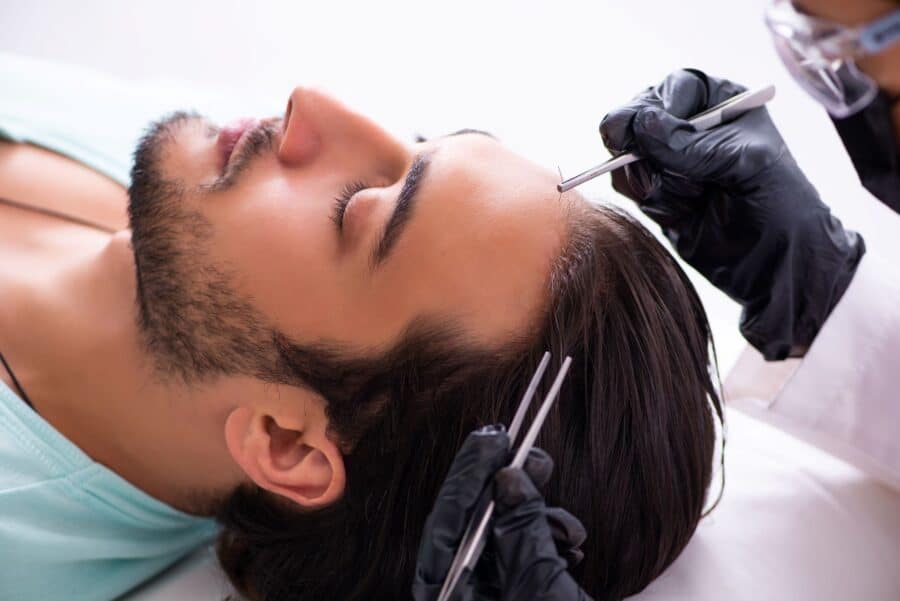This post may contain affiliate links. Read our disclosure policy.
- Understanding the Different Hair Loss Treatments
- Seeing if You’re a Good Candidate
- The Consultation
- Getting a Hair Transplant
- Post-procedure
Your appearance naturally changes throughout your life for several different reasons. Some appearance changes are easy to deal with and even welcomed. On the other hand, others— such as hair loss—are not a happy change. When something as drastic as hair loss occurs, it’s normal to feel panicked and upset. After all, for many people, hair is intrinsically tied to their confidence.
There are many things you can do about hair loss, from minimally invasive methods like hair oils to something a little more drastic like a hair transplant. So, when is a hair transplant the best option? If you’ve experienced hair loss, going on this journey to a hair transplant may be the best way to restore your confidence (and your luscious locks!).
Understanding the Different Hair Loss Treatments
For most people, a hair transplant isn’t the first solution they’ll decide upon, as there are other hair loss treatments to try first, such as the following:
- Minoxidil
- Rosemary oil (and other hair oils)
- Treating a vitamin deficiency
- Hair transplants
The treatment you choose for hair loss will often depend on the severity and cause. If you’ve only experienced mild hair thinning due to the natural aging process, home remedies such as hair oil might be enough to restore your locks. On the other hand, significant hair loss might mean that a hair transplant is the best option.
Seeing if You’re a Good Candidate
A hair transplant isn’t for everyone. Factors such as hair texture, density, and color will determine whether you’re a good candidate for the procedure. Some people aren’t good candidates for hair transplants. For example, people who have serious health issues like heart disease or diabetes. Generally, being mentally and physically healthy is an essential component for good candidacy.
The Consultation
You can decide whether you’re a good candidate by doing some home research. However, if you’re unsure, you can determine if a hair transplant is a good solution for your hair loss at a consultation. The consultation is also a great time to decide if the clinic you’ve chosen is the right one for you. Fortunately, consultations have become even easier in recent years, with hair transplant clinics like hshairclinic.co.uk allowing you to book an online consultation by uploading photos to make it personalized and tailored to you. During this consultation, you can go over what to expect, including how natural the results will look at the end.
Getting a Hair Transplant
Finally, it’s time to actually go through with the procedure! While this can be very nerve-wracking—it is cosmetic surgery, after all—you should remember that hair transplant surgery has come so far over the years. You’ll experience a minimum amount of discomfort and virtually no pain. The procedure itself takes between five to seven hours, depending on your individual case. The more grafts you need, the longer it will take.
Post-procedure
Unlike some other cosmetic procedures, the results of a hair transplant aren’t immediate. To witness the full growth of your new hair, you need to wait for your scalp to heal and the hair to grow. First signs of hair growth typically occur after three months, at which point you’ll notice fine, thin hairs coming through. Don’t worry— they’ll look thicker over time as the hair reaches maturity. Typically, the final result is seen between twelve and eighteen months after the surgery.
Not everyone who experiences hair loss will opt for a hair transplant. However, it’s good to know that it’s an option, especially if home remedies don’t seem to work. Keep in mind that hair transplants have really improved over the years; they no longer provide the unnatural results that were so common in the twentieth century! Now, you can get a hair transplant without anyone even noticing.



